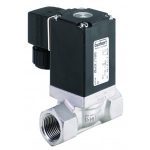Radar level transmitter transmits a high frequency electromagnetic wave pulse typically in the microwave spectrum, and receives the wave reflected off a liquid surface. The time taken for the microwave pulse to traverse the distance between the transmitting antenna and target surface, and back again to the receiving antenna is measured.The distance (d) between the radar liquid level sensor and the liquid surface can be calculated by dividing the time taken (t) by two, and multiplying that by the speed of light (c), i.e. d = c ∙ t / 2. The liquid level in a tank (LT) can then be determined by subtracting distance (d) from the height of the radar level sensor (HT), i.e. LT = HT – d.

Advantage Of Radar Level Transmitter
1. No media contact for vertically mounted type, so flexibility for use on different corrosive media, thick fluids, slurries, wastewater
2. High temperature fluid compatibility for vertically mounted types, since no sensitive components make contact with the fluid
3. High accuracy due to high frequency pulse wave and precise transit time measurement
4. Sealed pressurised vessel will not affect performance
5. Longer range than ultrasonic
6. Not affected by surface changes such as air temperature, which cause problems with ultrasonic
Disadvantages of Radar level Transmitter
1. Foaming, splashing, vapour and humidity can affect measurement performance
2. High cost compared to other technologies
3. Top mounting only
4. Minimal blocking distance limits operation when in proximity to liquid level
5. Longer blocking distance than ultrasonic
6. Radar passes through low dielectric constant fluids
Know More About other Field instrument click here
About Measurement(Pressure, level, etc.) click here
To Read more about Instrumentation system click here
Learn more about Calibration click here
Participate in Quiz click here
Click Here





Displacer/Level Troll Type Level Transmitter




